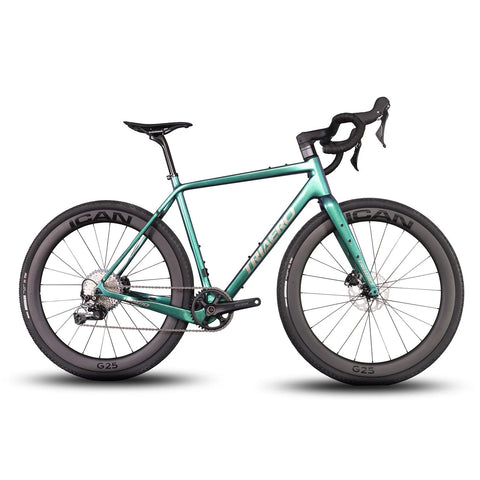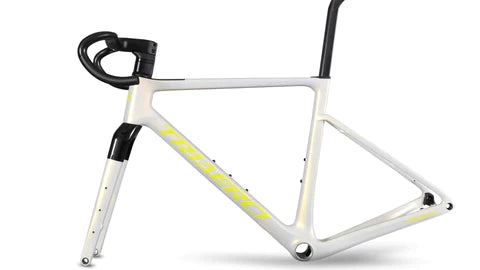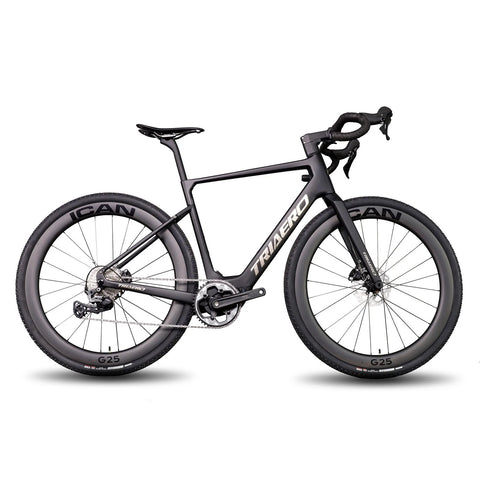What's Gravel Riding?
Gravel riding, also known as gravel grinding or gravel biking, is becoming an increasingly popular form of cycling. It combines road and mountain biking elements and mainly involves long-distance riding over unpaved roads. To qualify as a gravel riding trail, the routes must consist of non-technical and unsurfaced roads, such as dirt or gravel roads.
Generally, the best gravel riding trails are found in rural areas, as most cities have paved roads for commuters. Rural areas also offer opportunities to explore some incredibly scenic sites accessible only by going off the beaten path. You can discover old wagon trails, forest roads, canal paths, and more while enjoying the thrill and danger of the rocky terrain and uneven ground that comes with gravel riding.
Gravel riding takes cycling to the next level and provides riders with exhilarating discoveries. The captivating scenery along the way makes it one of the most aesthetically pleasing riding adventures possible.
Upgraded Internal Routing X-Gravel Bike
Do I Need A Gravel Bike?
Gravel bikes are specifically designed to meet the demands of off-road riding. While using a gravel bike for off-road cycling is not mandatory, it can significantly enhance your riding experience by making it more comfortable and enjoyable.
The best gravel bikes have greater tire clearance, more relaxed and stable geometry suitable for longer rides and rough terrain, and more luggage-mounting options.
Gravel bikes have a rigid frameset that, combined with a drop-bar position, offers greater pedaling and aerodynamic efficiency on roads and gravel tracks. Additionally, a drop handlebar provides multiple hand positions, which can be beneficial for minimizing hand and wrist discomfort during longer rides and multi-day backpacking tours.
Choosing The Right Gravel Bike Tires
The right gravel bike tires can make all the difference between a fun ride or a nightmare. As the tires serve as the only contact point between the bike and the terrain, it is critical to choose the appropriate tire type, tread, volume, and gravel tire pressure based on the trails and conditions you expect to encounter.
Tubeless tires are highly recommended for off-road riding because you are more likely to encounter thorns and sharp rocks that can puncture the tires. Tubeless tires also allow you to run lower tire pressures with a reduced risk of pinch flats. However, it's still possible to cause a snakebite puncture in your tire, so getting the tire pressure right is crucial.
Tire widths can range from 32mm to over 50mm or 2.1in. The most common tire width is around 40mm, but the width you choose to run depends on your frame's tire clearance and the pressures you'd like to run.
Larger tires will enable you to run lower pressures, providing greater comfort and allowing you to tackle more technical terrain confidently. If you have limited tire clearance, you can opt for 650b wheels and tires (27.5in equivalent) to run wider tires without changing the frameset.
The terrain and weather conditions determine which tread you should use. It would help if you balanced the need for grip and speed based on the trail conditions. For instance, select a more aggressive, knobbly tread for wetter, muddier conditions or a slicker tread for dry hardpack.
Skills For Riding On Gravel
1. When riding on gravel, it's important to prioritize remaining seated and keeping your body weight centered to handle bumpy terrain. Even when the going gets tough, it's best to avoid standing up to power through. Instead, stay seated and shift to a lower gear to maintain control over loose terrain and increase your cadence. However, it can be challenging to stay seated when riding over the rugged terrain that's common on gravel trails. To address this, you might want to consider installing a suspension seatpost on your gravel bike, which will allow you to stay seated while powering over bumps and ruts without experiencing the discomfort of a hard saddle.
2. When riding on gravel roads, cornering is different from tarmac. You should look for the smoothest line and avoid any rough or loose gravel if possible. Taking the inside line can give you more space to correct your line in case anything goes wrong while exiting the corner.
As the terrain becomes more technical, line choice becomes increasingly important. To ride faster, you should look for the smoothest line and avoid larger rocks, roots, and looser sections.
3. When cycling on gravel terrain, it is important to avoid sharp and abrupt turns as they increase the risk of sliding. Instead, smoothly shift your weight and direct your hips in the appropriate direction to ensure a stable and controlled turn. Remember to make gentle leans and smooth transitions. You may find it helpful to use specially designed gravel handlebars with flared grip sections that allow you to drop down into a wider position for better control and stability.
4. It's important to look ahead at upcoming trail features instead of focusing on the front wheel.
5. When riding on rough terrain, it's important to remember to relax and float over the bumps. Keep your elbows slightly bent and avoid clamping down on the handlebars or braking too much. When you encounter washboards or corrugated roads, it's easy to feel like you need to hit the brakes, especially when going downhill. However, braking can make your tires lose contact with the ground, causing you to lose control. Instead, try to glide over the rough patches smoothly without any sudden braking.
6. Always be cautious of vehicular traffic, even if the road appears deserted. Stay on your side of the road, especially on blind hills and turns.
What Kit Do You Need To Take For Gravel Riding?
It's important to ensure that you carry all the necessary tools and spares when going on a gravel bike ride. This includes items like a chain tool and quick link, a tubeless repair kit, a tire boot, spare tubes, and a high-volume pump. If you're going into remote areas, it's also advisable to carry a spare derailleur hanger, cable ties, tape, and even brake pads.
Using gravel bike accessories, such as a frame pack, can help you store all this equipment safely and securely, along with food and other spares, without interfering with your ride.
Before setting out on your ride, it's a good idea to plan your route and load it onto your GPS bike computer, smartwatch, or phone. Apps like Komoot can be beneficial, as they provide recommendations based on user feedback. This allows you to build a ride with the best gravel sections, climbs, and coffee stops.
In case of battery failure, carry a paper map as a backup when taking longer trips into remote areas. Additionally, be sure to pack plenty of snacks and water for your ride. Running out of supplies in the middle of nowhere can be very unpleasant.
Choose A Route
If you are looking to explore gravel routes in your area, consider visiting a local shop or riding club and asking for route suggestions. Starting small and building up gradually is always a good approach to getting comfortable with gravel riding. Remember that most gravel routes include sections of road or trail that connect different segments. Embrace this variety and explore what the outdoors has to offer.
Electric Gravel Bikes
In recent years, the trend of gravel riding has gained immense popularity, and now, with the advent of electric bikes, we have the best of both worlds - electric gravel bikes.
These bikes have gained popularity due to their off-road capabilities and extra power that comes with electric bikes. They allow riders to explore gravel roads and off-road terrains with ease, while the electric motor provides an added boost to tackle steep and sketchy surfaces.
One of the biggest advantages of electric bikes is that they make cycling accessible to a wider audience. They are particularly useful for older riders or those with physical limitations who still want to enjoy the thrill of cycling. With electric assist, riders can get a helpful push from the motor while still putting in work to ride.
In conclusion, electric gravel bikes are the future of off-road riding. They combine the best features of electric bikes and gravel bikes to offer an unparalleled riding experience. With their natural-feeling electric assist, generous tire clearance, and off-road capabilities, electric gravel bikes are an excellent choice for adventurous riders who want to explore new terrains and push their limits.



